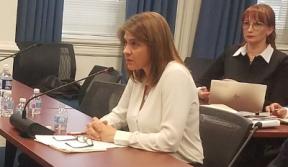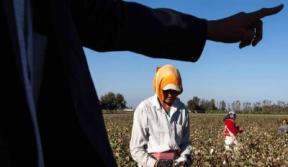
This week, as millions of American kids prepare their costumes for the biggest chocolate consumption holiday of the year – Halloween – most are unaware of the 2 million children laboring in West African cocoa fields. Likely none share industry experts’ worries about the sustainability of cocoa supplies in the world. Yet cocoa, which has the lofty Latin name, Theo Broma (fruit of the gods), has proven to be one of the most difficult development conundrums for those who advocate for international trade as a path to prosperity for developing nations.
Since 2000, when my organization, the International Labor Rights Forum and others helped push out international exposés of child labor and child trafficking in Ivory Coast’s and Ghana’s cocoa sectors, hundreds of millions of dollars have been spent to build schools, train farmers, certify cooperatives and generally transform the industry. Sadly, little has changed. In 2015, Tulane University reported that child labor actually increased between 2009 and 2014 in Ghana and Ivory Coast. These two countries, which produce 60% of the world’s cocoa supply, should theoretically have some influence over the cocoa market, as remarked recently by the President of the African Development Bank, Akinwumi Adesina. Yet they have been unable to convert that market dominance into national prosperity and there are wide spread, anecdotal reports of labor shortages and of cocoa farmers turning to more profitable crops such as palm oil because they can’t make enough in cocoa.
This exodus from cocoa farming shouldn’t really surprise industry or development experts since the Cocoa Barometer, which estimates farmer incomes based on pricing, average per hectare production data, and average family size has shown since 2010 that most cocoa farmers still live well below the poverty line. In 2015, the Cocoa Barometer estimated the average cocoa farming family income provided per person per day income of 50cents in Ivory Coast and 84 cents in Ghana – well below the international poverty line, recently updated by the World Bank to $1.90 per person per day.
Despite the numbers, I’m actually hopeful the tide is turning. The World Cocoa Foundation (WCF) appointed a new president, Rick Scobey, who is talking about the need to address farmer incomes. The WCF also focused their annual conference, which I attended this week, on three themes:
- inclusive growth issues such as farmer livelihoods and women farmers’ empowerment;
- transparency and traceability, which is essential to having chocolate buyers and manufacturers become more accountable for conditions in their cocoa supply chains; and
- farmer professionalization, which included discussions of land tenure and farmers’ access to credit.
It’s a welcome shift to finally have the industry talking about farmer incomes, not just farmers’ productivity. Although I wish we could claim credit – we have been advocating various strategies to improve farmer incomes for more than a decade, starting with Fairtrade International’s pioneering of price premiums – the exit of farmers into other crops is likely the main reason for the shift in focus from “How do we sustain our cocoa supplies?” to “How do we sustain cocoa growing communities?” Hopefully, this shift ushers in a more holistic approach to ending child and forced labor in cocoa, one where companies don’t segregate their charity work building schools from their duty, under the UN Guiding Principles on Business and Human Rights, to monitor and remediate child labor and its causes.
So what to do about all those trick-or-treaters? Having grown up in Hershey, PA, I’m the last one to advocate for candy corn (that uniquely American confectionary) over chocolate.
Our friends at Green America publish a Chocolate Scorecard, which still credits Fairtrade International for paying the highest price premium to farmers and doing the most to monitor and remediate child labor. Although the price premium, even if it were doubled, would still leave cocoa farmers subsisting well below the poverty line, it remains an important benchmark. Additionally, companies such as Divine and Equal Exchange go a step further than most in developing strategic partnerships with cooperatives of cocoa farmers and ensuring those farmers receive a higher percentage of the profits from the final product you consume.
If you absolutely have to buy in bulk, though, we can at least recommend Nestle over others this year. Nestle gets a C+ from Green America – the highest grade for any of the large chocolate manufacturers and, although they haven’t had any breakthroughs in addressing the abject poverty or power imbalance between farmers and chocolate manufacturers, they have been leading the field in transparency. Their most recent report, co-published with the International Cocoa Initiative, features a promising Child Labor Monitoring and Remediation System (CLMRS) and establishes a level of transparency in corporate reporting, which we can only hope inspires a trend among others in the industry.
Greater transparency, starting with the way chocolate manufacturers report on their supply chains and their investments into social solutions, would go a long way to finally breaking through nearly 20 years of muddled, sometimes counterproductive experimentation to addressing child labor and farmer poverty in cocoa. From the perspective of the farmers, this breakthrough is urgent. We can’t waste yet another generation.

